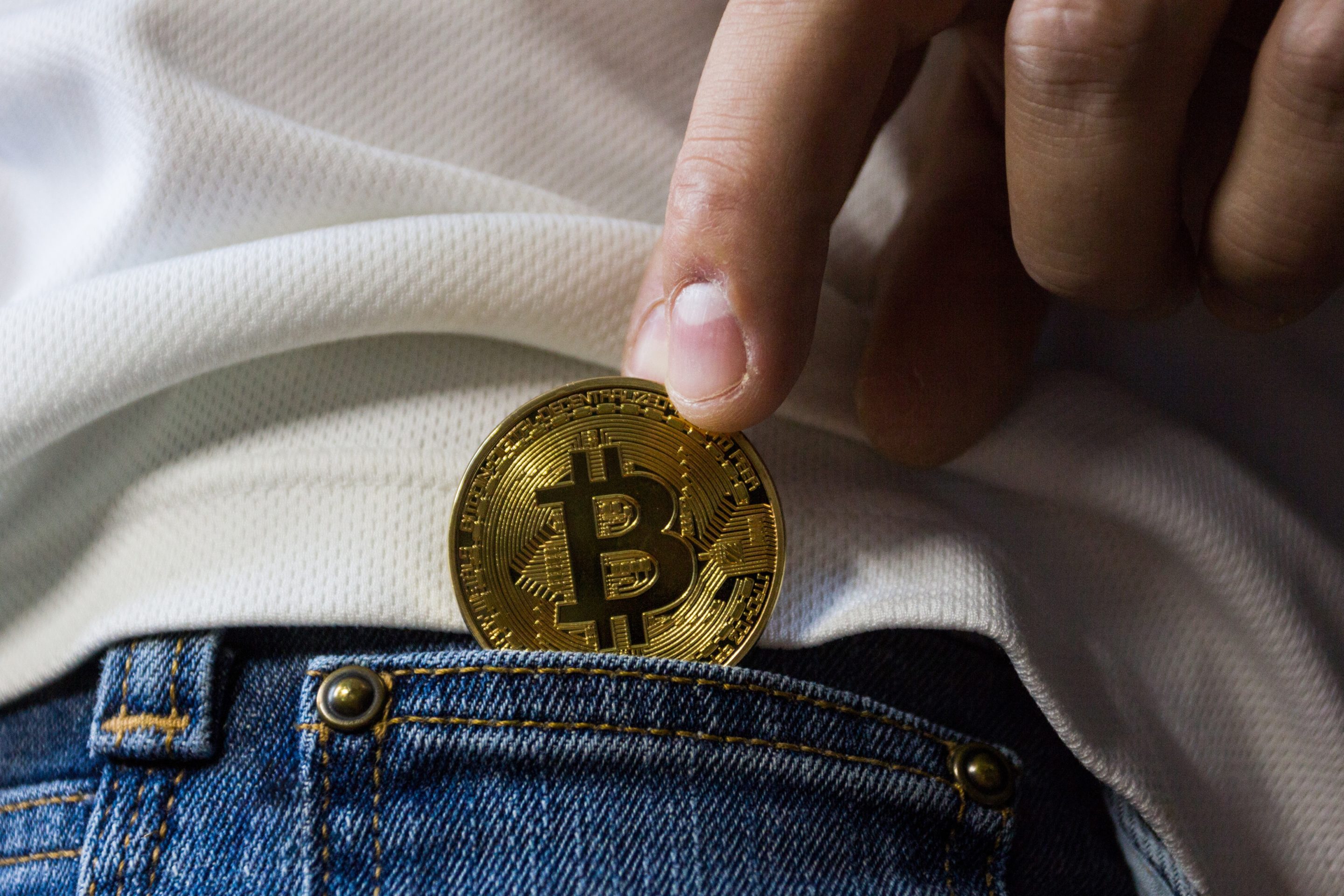Last week, the Justice Department announced criminal charges against Anatoly Legkodymov for violating anti‐money laundering laws while operating Bitzlato, an off‐shore crypto exchange alleged to have processed over $700 million in illicit funds over several years. Concurrently, the Treasury Department’s Financial Crimes Enforcement Network (FinCEN) ordered covered financial institutions to cease transacting with Bitzlato.
Like all financial instruments, crypto is used for crime, and this fact ought to be taken seriously. But blunt claims like Senator Elizabeth Warren’s (D‑MA) assertions that “crypto has become the preferred tool for terrorists, for ransomware gangs, for drug dealers, and for rogue states that want to launder money” do not withstand scrutiny. Lawmakers’ response to crypto’s use in crime should not be based on the faulty premises that criminals primarily choose crypto and, relatedly, that crypto is primarily used for crime.
Exaggerating the connection between crypto and crime neither helps to efficiently allocate law enforcement resources nor gives due to the great majority of crypto activity that is legitimate. Inflating risks and ignoring benefits will not lead to sound policy.
Taking Stock of the Data on Illicit Use
In general, claims that crypto is criminals’ preferred tool shouldn’t be taken at face value. As Senator Warren herself alluded to when introducing the Digital Asset Anti‐Money Laundering Act—a sweeping financial surveillance bill cosponsored with Senator Roger Marshall (R‑KS)—approximately $14 billion worth of crypto was used in connection with illegal transactions in 2021, according to estimates in crypto analytics firm Chainalysis’s 2022 Crypto Crime Report. (As Chainalysis predicted, this estimate ultimately was revised upward to $18 billion.) This number may seem large, but it must be placed in context.
When it comes to money laundering specifically, the 2022 Chainalysis report estimates that cybercriminals laundered $8.6 billion in crypto in 2021, judging by funds flowing from illicit crypto addresses. To be clear, Chainalysis has noted that such figures are lower bound estimates and do not include crime that is not native to crypto. But even if Chainalysis’s figures were a significant undercounting (as Senator Warren has suggested), crypto’s use in illicit finance likely still would be a small fraction of the 2.7 percent of global GDP ($2.6 trillion in 2021) that a 2011 United Nations Office on Drugs and Crime report estimates is laundered annually.
For instance, a high estimate of illegal crypto activity in the peer‐reviewed Review of Financial Studies extrapolated based on 2017 data that around $76 billion of illegal activity annually involves Bitcoin. At the time of the study, Bitcoin accounted for about half of total crypto market capitalization. Therefore, even if one made the aggressive (and unlikely to bear out) assumption that the other half of the crypto ecosystem experienced the same degree of illegal activity, this would still make a high‐end estimate of illegal crypto activity approximately $152 billion, or 0.2 percent of contemporaneous global GDP—an order of magnitude smaller than the UN’s estimate of total money laundering around the globe each year.
The Treasury Department’s 2022 National Money Laundering Risk Assessment also supports the idea that crypto is far from money launderers’ primary tool for the job, finding that, although crypto’s use in illicit finance has been increasing over time, its use for money laundering is still “far below that of fiat currency and more traditional methods.”
When it comes to illicit transactions by sanctioned entities, crypto’s usage rose markedly in 2022, but it remains difficult to conclude that crypto is the main sanctions evasion instrument. A preview of Chainalysis’s new 2023 Crime Report indicates that a large portion of 2022’s illegal crypto transaction volume (44 percent) was associated with sanctioned parties’ activity. Nonetheless, when questioned by the House Financial Services Committee in April 2022, Treasury Secretary Janet Yellen testified that “It’s harder on a large scale for an economy to actually use crypto to evade sanctions,” as “[l]arge-scale transactions would become apparent by those who regularly examine the blockchain” and “those who use crypto need to get in and out of it.” She remarked that the Treasury Department is aware of and monitoring the risk of crypto being used to avoid sanctions, but that they “haven’t seen significant evasion through crypto so far.” Notably, Secretary Yellen’s comments came after the Treasury Department had already sanctioned Moscow‐based crypto exchange Garantex, which Chainalysis found to have “accounted for the majority of sanctions‐related transaction volume” in 2022.
While crypto can be a preferred tool for certain categories of crime, such as ransomware attacks, the same can’t be said generally.
For example, cryptocurrency has not materialized as the primary financial tool for terrorists. A 2019 RAND Corporation report, Terrorist Use of Cryptocurrencies, concluded that although the authors expected crypto to have a significant long‐term impact on efforts to counter the financing of terrorism, current fears that cryptocurrency is “a significant enabler of terrorist groups are almost certainly overblown.” Three years on, the Treasury Department’s 2022 National Terrorist Financing Risk Assessment found that while terrorists have employed crypto, that use appears to be “limited when compared to other financial products and services.” While estimates that crypto’s role in terrorism financing likely is increasing should not to be ignored, nor should estimates that traditional financial tools like cash remain the “predominant methods of terror financing.” A recent study of ISIS terrorists’ financial activity between 2012 to 2020, for example, found that only 1 percent of their transactions used crypto to move money.
A similar pattern has been found with respect to drug trafficking. A 2022 Government Accountability Office report found that while drug traffickers’ use of virtual currencies is growing—a finding consistent with the 2022 Chainalysis report—“according to the Department of Homeland Security, traffickers continue to primarily use cash.” For context, a 2021 report by the UN’s International Narcotics Control Board cites data estimating the size of the global drug trafficking market in 2014 at between $426 billion and $652 billion. By contrast, the 2022 Chainalysis report estimated the 2014 revenue of drug‐focused darknet marketplaces at less than $500 million and the 2021 revenue—the high‐water mark—at less than $2 billion. In addition, while direct vendor‐to‐purchaser darknet sales that bypass marketplaces are growing, in 2021 they made up only about 5 percent of darknet revenue according to Chainalysis data.
It’s worth noting that financial activity that seeks to be covert by design—be it through tools like crypto or cash—poses intuitive challenges to data collection and comparison. But such uncertainties cut both ways, posing the same challenges to bold claims that crypto is the ultimate criminal tool as they do to claims that its use in crime is limited.
Furthermore, even where employed, cryptocurrencies shouldn’t be viewed as silver bullets in rogue actors’ arsenals, as demonstrated by law enforcement authorities’ ability to identify and disrupt financing schemes at times because of, not in spite of, the properties of certain crypto technologies. In fact, former Central Intelligence Agency Director Michael Morell characterized analyzing blockchains as a “highly effective crime fighting and intelligence gathering tool.”
Shedding Some Light on Crypto’s Legitimate Applications
Not only do claims that crypto is criminals’ preferred tool exaggerate the role of cryptocurrency in funding illegal activity, but they also ignore estimates both that the lion’s share of crypto activity is legitimate and that the legitimate share of crypto use is growing over time. The latest Chainalysis numbers estimate that transactions involving illicit addresses made up only 0.12 percent of the total cryptocurrency transaction volume in 2021 and 0.24 percent in 2022. (Interestingly, Chainalysis’s latest research has revised down 2021’s illicit transaction share number from 0.15 percent of total transaction volume.) Money laundering specifically was estimated to make up only 0.05 percent of total crypto transaction volume in 2021. Other assessments have gauged the share of illicit Bitcoin transactions at 0.1 percent to 5.1 percent in dollar‐value terms (which the intergovernmental Financial Action Task Force has interpreted to likely be a floor). Even the high‐end figures in the Review of Financial Studies article estimated that less than a quarter of the total dollar value of Bitcoin transactions through time was associated with illegal activity. And, while Chainalysis’s numbers for 2021 and 2022 indicate that illicit crypto transaction volume has been growing as an absolute number, the overall trend remains one where “crime as a share of all crypto activity is still trending downwards.”
While crypto critics are keen to point to speculation as driving crypto transaction volume, they often ignore other legitimate uses of crypto. So, what are some? In certain countries where fiat currencies and traditional banking institutions have proven untrustworthy, cryptocurrencies have filled a void. Whereas the Venezuelan bolivar has experienced significant devaluation over the last decade, with hyperinflation of 65,370 percent in 2018 alone according to the International Monetary Fund, cryptocurrency use in the country has grown in recent years. A similar phenomenon occurred in Turkey, as crypto use grew in the wake of the crashing lira. Nigeria and Kenya, which have both recently experienced depreciation in the value of their national currencies, rank 11th and 19th on Chainalysis’s Global Crypto Adoption Index. Vietnam is ranked number one in crypto adoption in no small part because of its flawed banking sector: 69% of its people are estimated to lack access to traditional banks.
Crypto also may fill a void where traditional banking systems have broken down due to war or other crises. For example, the UN Refugee Agency has launched a pilot program leveraging blockchain technology to distribute humanitarian aid to those affected by the war in Ukraine.
Beyond picking up where traditional financial systems have failed, many cryptocurrencies help to power new ways of monetizing and protecting data. For example, crypto projects such as Filecoin and Arweave are designed to incentivize the maintenance of decentralized and resilient file storage systems. Far from crypto being little more than a tool for terrorists and rogue states, this application of the technology has been leveraged by those fighting and documenting human rights abuses, including by archiving pro‐democracy journalism in Hong Kong and preserving genocide survivor testimony.
And that’s to say nothing of people who may have turned to cryptocurrencies for other reasons, including censorship resistance and the ability to engage in borderless transactions.
In Closing
Crypto critics don’t have to support all of crypto’s legitimate uses, or even like them, but they should at least acknowledge their existence. Fighting crime and facilitating innovation requires a clear‐eyed assessment of crypto’s risks and benefits. Overstating crypto’s criminal use and overlooking other applications will not yield sound policy on either front.
This article was originally featured at the Cato Institute and is republished with permission.












